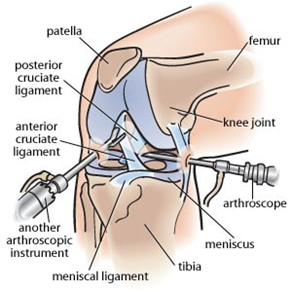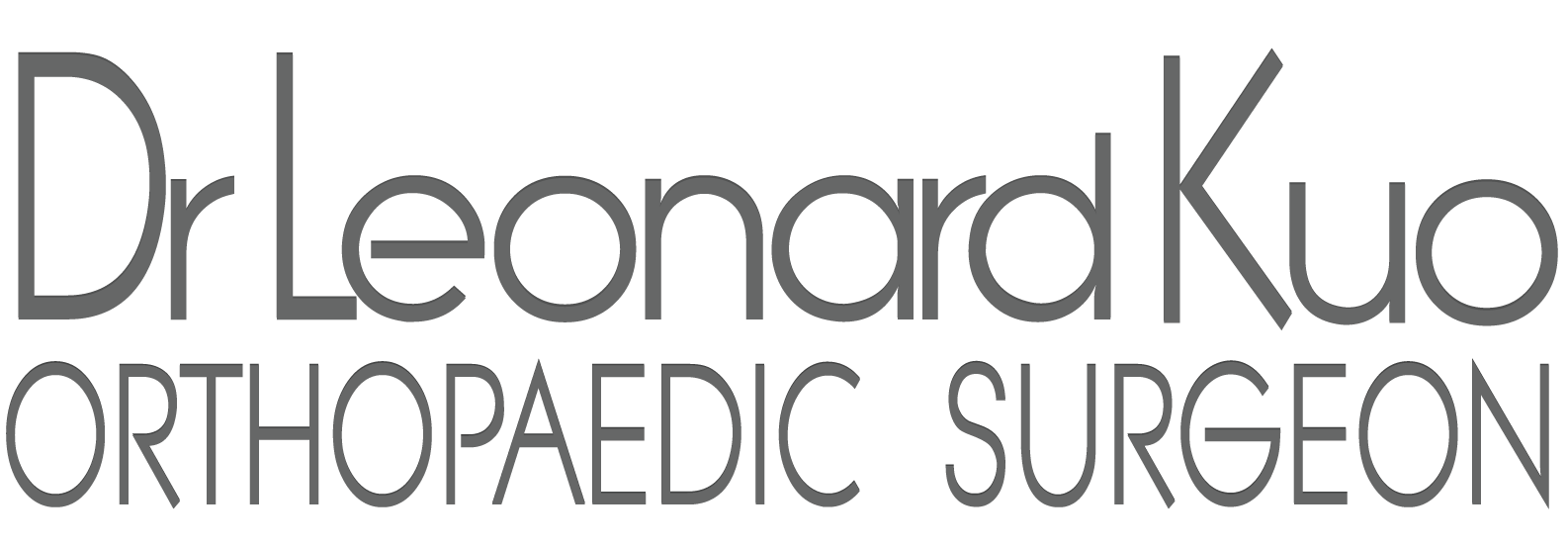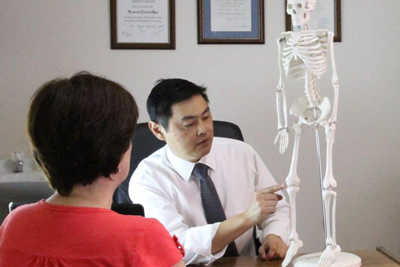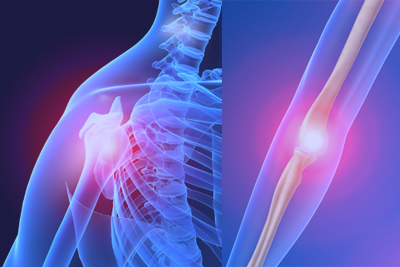ARTHROSCOPIC KNEE SURGERY
The knee is a complex joint comprising bony surfaces covered with smooth cartilage, fibrocartilage pads called menisci and ligaments. Two of the ligaments of the knee joint are within the joint space-these are the cruciate ligaments. In addition, there are two ligaments outside the joint, one on each side-called the collateral ligaments. knee is a complex joint comprising bony surfaces covered with smooth cartilage, fibrocartilage pads called menisci and ligaments. Two of the ligaments of the knee joint are within the joint space-these are the cruciate ligaments. In addition, there are two ligaments outside the joint, one on each side-called the collateral ligaments.Arthroscopy is used to look inside the knee joint without disrupting the surrounding structures. This allows the surgeon to assess damage to the menisci, cruciate ligaments and joint surfaces. In some cases it may be difficult to be certain of the diagnosis of meniscal injury on clinical examination. Arthroscopy allows the surgeon to look directly at the menisci and be certain of any damage. Likewise, if there is any question of damage to the cruciate ligaments or joint surface, arthroscopy is helpful. Arthroscopy can also be used to repair the injury while causing minimal disruption to the knee joint. The most common injury to the menisci is a tear. The torn flap may get caught between the femur and tibia causing pain and in the extreme case, locking. In the long term this may cause damage to the joint surface leading to osteoarthritis. It is therefore beneficial to remove the torn piece of meniscus to prevent this. The surgeon aims to leave as much of the meniscus as possible because the ‘cartilage’ serves important functions. The arthroscope is a thin cylindrical tube containing light fibres and a means of transmitting a picture from inside the knee to a camera. The knee joint is filled with fluid to distend the joint and allows the surgeon to look around the brightly lit knee joint and inspect it for damage. The arthroscope is inserted through a small incision, less than 1cm long , either side and just below the knee cap. A small metal probe is also used to help show if there is any tear in the menisci. Once the damage to the menisci has been determined, small cutting tools are inserted into the joint through the same holes that were made initially. With the arthroscope in the joint giving the surgeon a clear view, these small cutting instruments are then used to remove the damaged part of the meniscus. This is done so that there is a smooth surface on the meniscus allowing the joint to roll back and forth without catching or locking. The joint is then washed clear of any meniscal pieces. Most of this fluid is drained out at the end of the procedure, however the knee may feel as if there is a bit of fluid within it for a few days. In general, arthroscopic surgery requires you to be in hospital for one day only. Compared to open surgery, it causes little disturbance to the knee joint and consequently the post operative discomfort is decreased. The degree of discomfort is variable but usually slight and walking is possible. Physiotherapy may be helpful afterwards in some patients. The best exercises to help in the recovery of your knee are called ‘straight leg raising’. This involves lying on your back and lifting the leg, which is held straight, directly off the floor or bed and then letting the leg go back to rest. 250 of these a day is not an excessive amount. A soft dressing has been applied to your knee and this will absorb any leakage of fluid or blood form the knee. A small amount of leakage is normal and nothing to worry about. If the dressing becomes soiled after 3-4 days, you can take it down and replace it with bandaids over each of the small incisions and then cover it with a light crepe bandage. You may have a shower but keep the dressing dry by covering your leg with plastic. (placing your leg in a garbage bag and taping it at the top works well.) As you may have some swelling and fluid retention it is essential not to over exercise. Rest is required and is part of your recovery programme. Your post operative appointment will be approximately two weeks from the date of your operation and this appointment is made by you as soon as you come out of hospital. |





 Dr. Leonard kuo
Dr. Leonard kuo